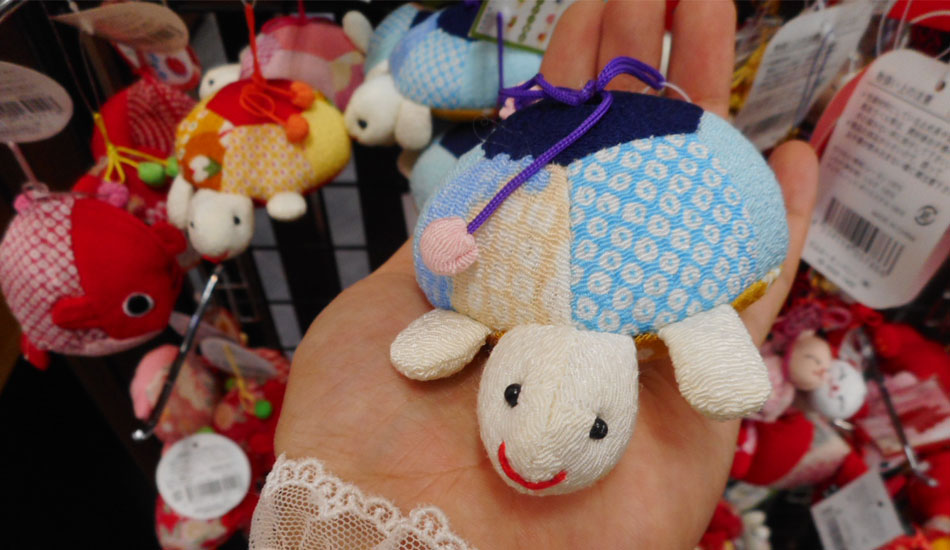Your One-Stop Destination for Everything Kameido!
Published: June 21, 2017
Dear Readers of Kotomise—
While there is nothing I would love more than to entice you into spending a day exploring all the nooks and crannies of Koto City, I know you’re busy people. Between work, family, social life and the reality of day-to-day living (and time constraint, if you’re only visiting Tokyo for a little while), you have to choose carefully where your time is spent to maximize your enjoyment. Well, Kameido Umeyashiki is the perfect pit stop for your busy life.

Umeyashiki: A Brief History
The original Umeyashiki (Plum Manor) was an estate in the Kameido area during the Edo period (1603~1868). The estate was home to many plum trees with gorgeous blossoms, and people from all over would travel to see these magnificent trees and socialize with each other. The fame of its plum grove grew so much that renowned ukiyo-e painter Hiroshige Utagawa immortalized its beauty in art form, and Vincent van Gogh later copied this painting to express his appreciation.
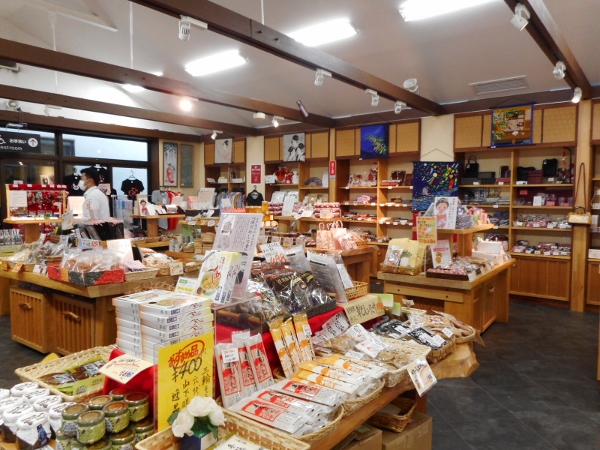
Now, centuries later, the Umeyashiki tradition of being a place where people can gather to have a good time is being kept alive. The newly constructed Kameido Umeyashiki is a wonderful establishment located just a short walk from the North Exit of Kameido Station. Built as a “collaborative commercial center”, Kameido Umeyashiki has assembled the foods, crafts, and culture that best represents northern Koto City into one unique location.
The low, white-walled building reminiscent of olden-day architecture is divided into several sections. Upon entering, you’ll first see a tourist information center and a vast shopping area full of shelves lined with Kameido’s best products.

From the myriad temptations, you might choose to get a good-luck “Kachi-un” manju (traditional Japanese confection), filled on the inside with, surprisingly, daikon radish mochi! This is because Kameido was long famed for its production of Kameido Daikon, a breed of radish that is now rare to find in Japan. The health-conscious manju does not use any white sugar, and is said to bring luck associated with nearby Kameido Katori Shrine.
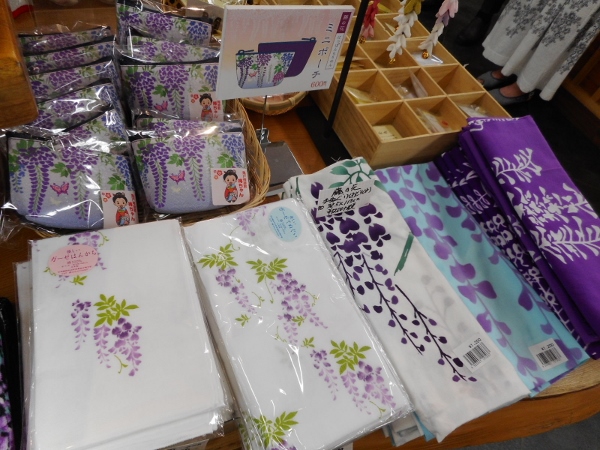
Another recommendation would be the collection of wisteria goods, a perfect reminder of the glorious wisteria that blooms each spring at Kameido Tenjin Shrine.
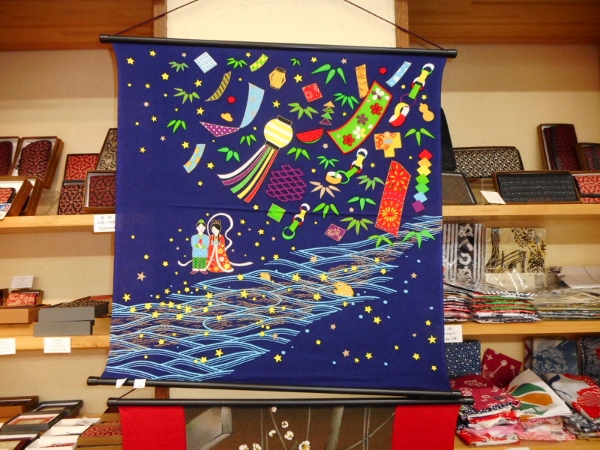
Or, how about this beautiful furoshiki (all-purpose cloth), just in time for the Tanabata Star Festival on July 7th?
From household items to fashion to food, this area is a great deal of fun to explore (^^)
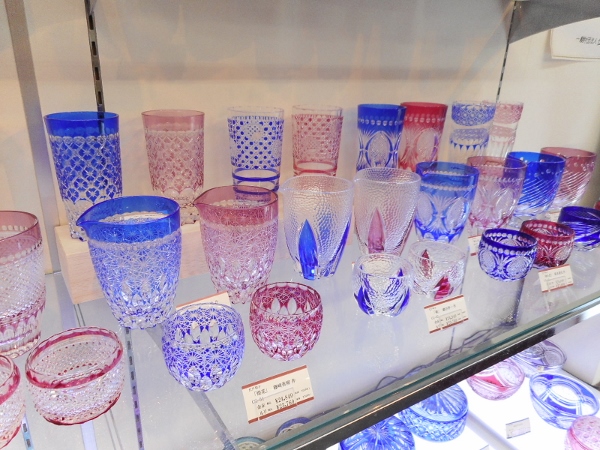
One corner in particular presents a breathtaking sight: a collection of Edo-kiriko (Edo cut glass) ware!
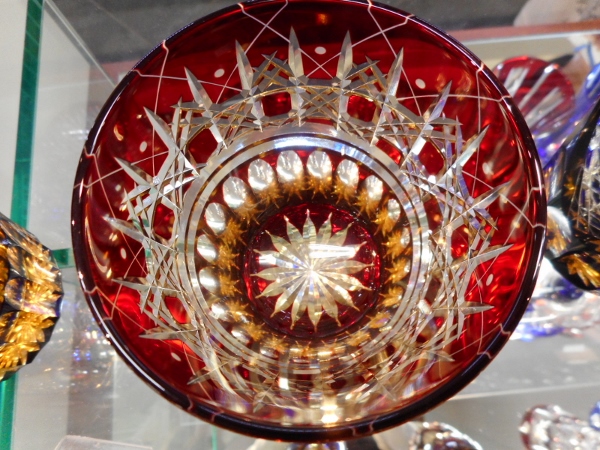
Edo-kiriko is a traditional art that has tenaciously survived Japan’s turbulent history. With only a handful of ateliers left—most of them concentrated in Eastern Tokyo—the craft is a beloved part of Koto culture, and many pieces come with a price tag that attests to the skill and time it takes to bring them into existence. (Thankfully, window-shopping is free.)
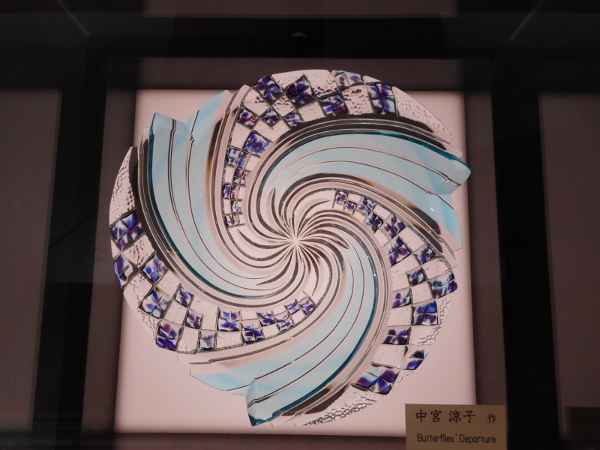
For those with an eye for art, the Edo-kiriko wonder continues into the adjoining Edo-kiriko Showroom. Larger pieces, such as vases and plates with intricate patterns are on display, and the collection rotates every season. One in particular, aptly named “Butterflies’ Departure”, caught my eye with its dynamic composition and delicate shimmering colours.
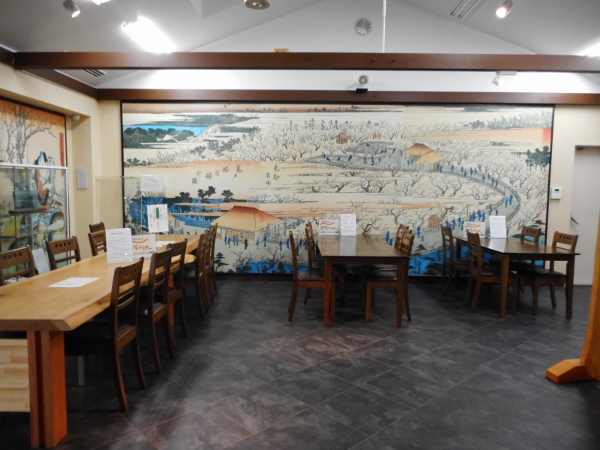
Beyond the Showroom is a café and rest space, romantically named the “Ukiyo-e Salon”.
There are even meeting rooms and a small stage in the back, for groups to rent and use! Sometimes they host rakugo (humorous storytelling) sessions or crafting workshops, to the delight of the local community.
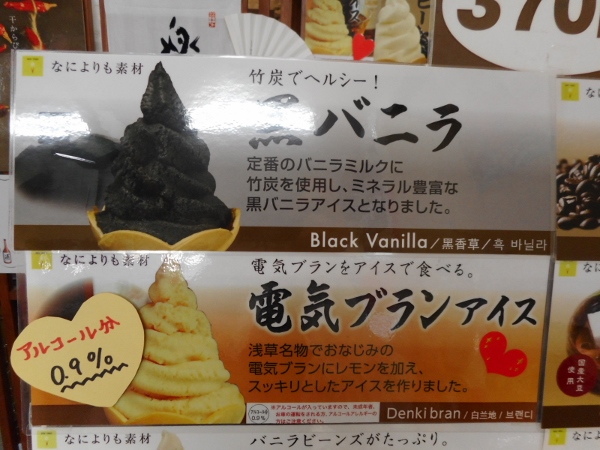
And no trip to Kameido Umeyashiki would be complete without a sampling of their sweet, cold, soft-serve ice cream. A recently added flavour, the Denki Bran Ice, is based on a famous brandy cocktail made in Asakusa. Just be careful—it does contain 0.9% vol. alcohol, so stay out of the driver’s seat afterwards!
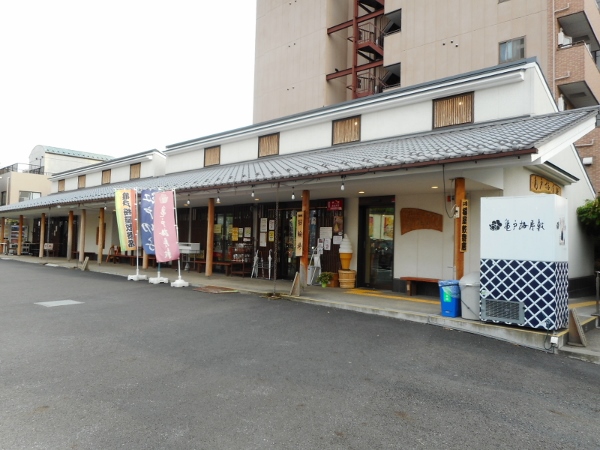
All in all, Kameido Umeyashiki is a fun little destination where you can experience the best of Kameido all in one place. And without a doubt, the Umeyashiki of today is becoming as important a community symbol as its namesake was 200 years ago.
Story and Photos by Xianru Shen (Koto City Office Coordinator for International Relations)

